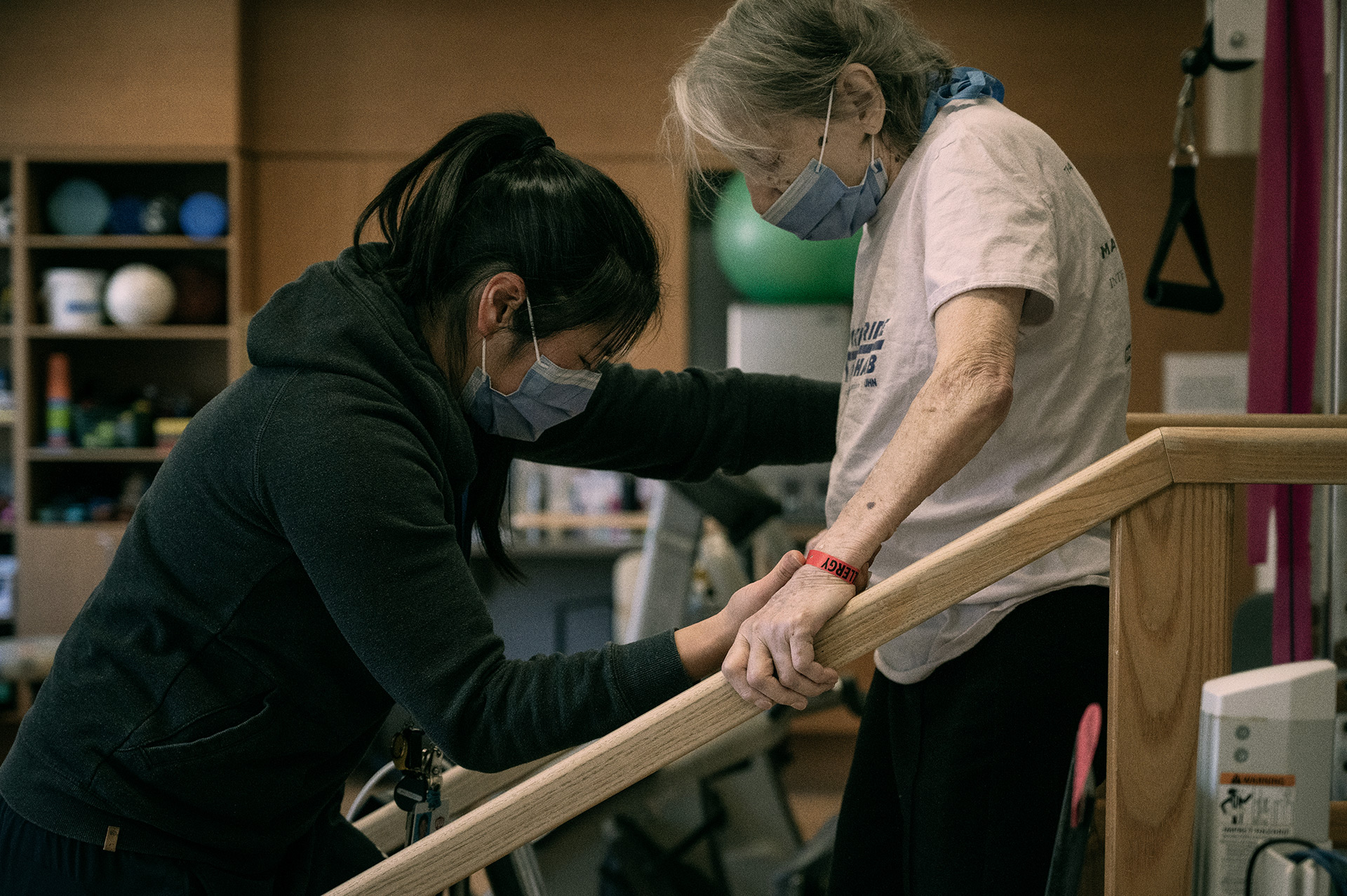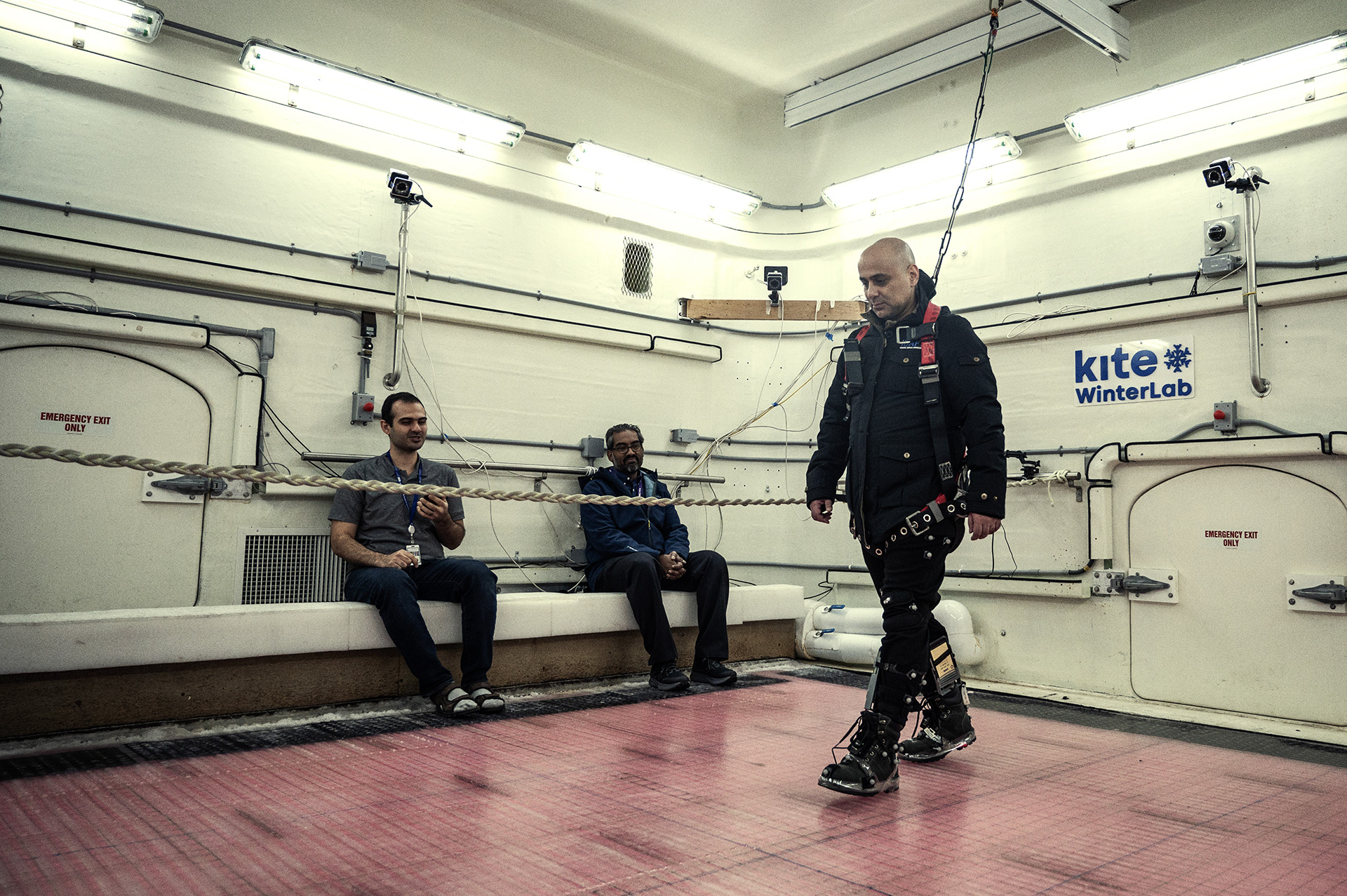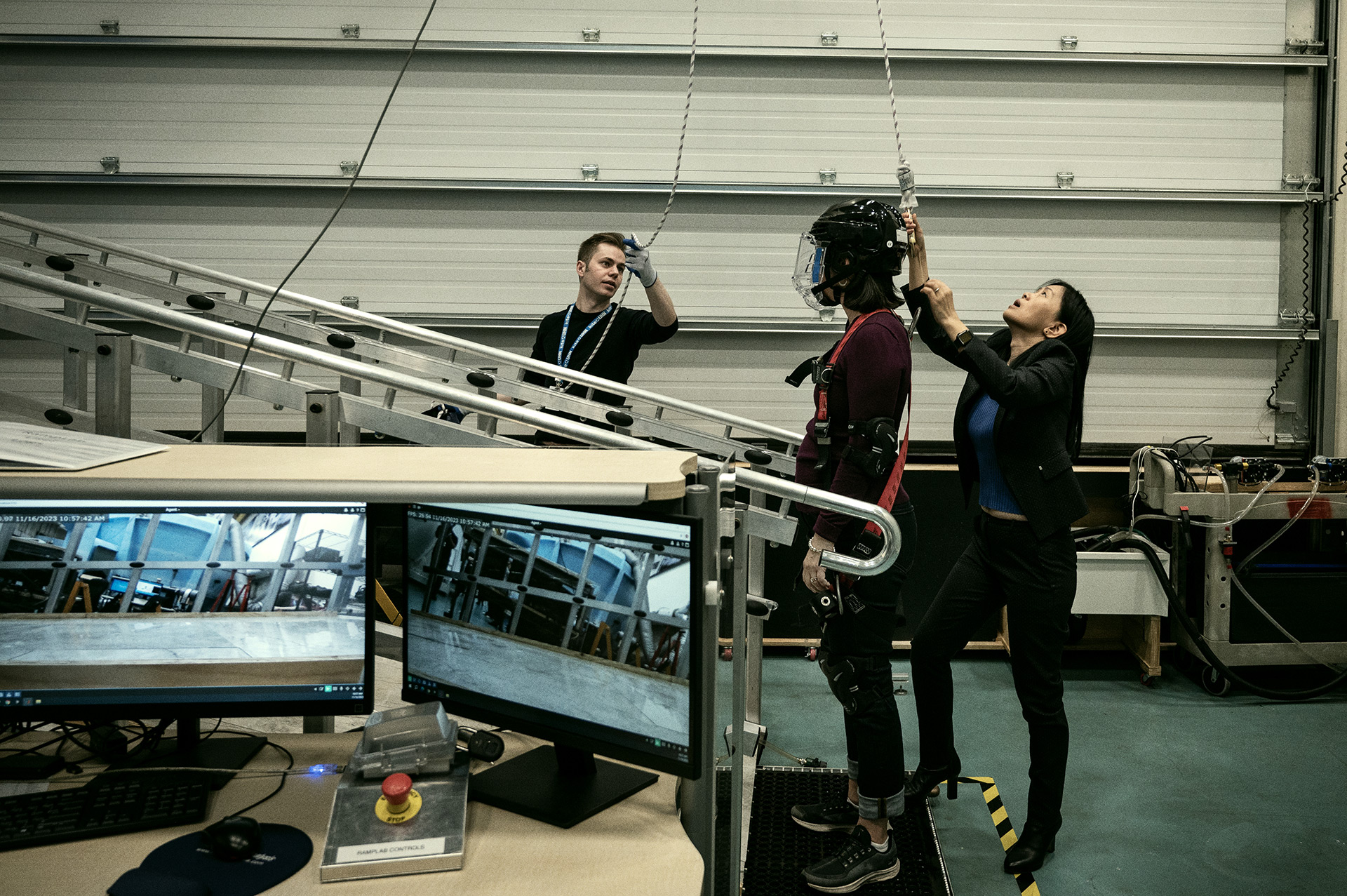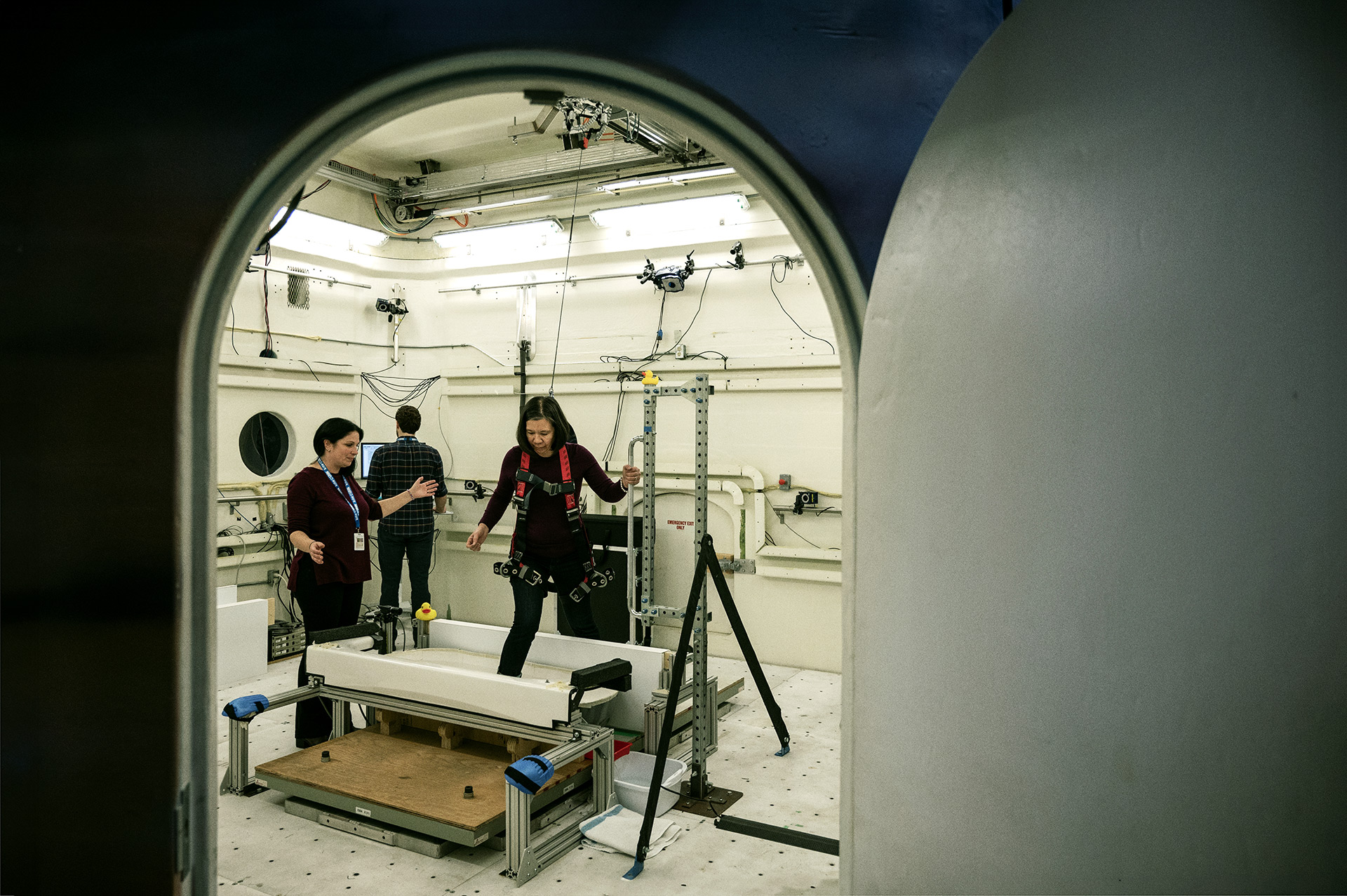
Have you ever thought about what goes into the act of falling? Are our homes, sidewalks and streets safe enough to prevent us from falling?
At UHN, research teams are redefining how we fall and how to prevent it from happening.
With more than 654,000 emergency department visits for fall-related injuries occurring in Canada each year, learning how to prevent falls from ever happening is a UHNITED effort.
KITE Research Institute, the research arm of UHN’s Toronto Rehab, is home to multiple state-of-the-art laboratories dedicated to understanding balance and mobility for patients – from the stairs in our homes, to the material used on our floors. Game-changing research teams are looking at everything to design and implement better fall prevention strategies in our communities.
Improving independence through balance research
In Canada, it is estimated that 3,800 people are hospitalized in Ontario each year as a result of a stair fall. In the KITE StairLab, researchers like Dr. Alison Novak and her team are improving independence and preventing injury through gait and balance research in aging populations, where stair falls are a leading cause of injury.
In a lab outfitted with several home-like elements and specialized equipment, researchers can track participants through different scenarios that may seem ordinary. For example, going up and down the stairs, exiting a soapy bathtub or experiencing a sudden shake that disturbs balance. This research has led to the development of improved assistive devices, updated building codes and better environmental design standards. Through this innovative work, researchers can ultimately provide evidence for enhanced safety standards and clinical recommendations to keep homes safe and accessible for everyone.
Making accessibility a possibility all year around
Canadian winters can be extreme and the physiological effect of freezing temperatures can be hazardous. Seniors are most affected, often remaining isolated in the winter due to the fear of slipping and falling.
In the KITE WinterLab, Dr. Tilak Dutta and his team are conducting research in extreme weather conditions to make mobility safer and more accessible in the winter.
All within the safety of an indoor, controlled laboratory, scientists have recreated sub-zero temperatures, snow and ice covered surfaces, and slippery slopes to test how people and devices respond to these circumstances.
Using this revolutionary space, the research team are developing and testing new winter footwear and determining improvements for mobility aids like scooters and crutches so they can perform better on icy and snow-covered surfaces.
Revolutionizing accident prevention through footwear and flooring
In KITE’s RampLab, Dr. Sophia Li and her team are aiming to reduce slip and fall incidents by looking towards our feet to find the solution. Using detailed biomechanical studies, the team is analyzing how footwear and floor material design influence how we slip and fall.
From engineering safer tiles that can be used in bathroom and kitchen spaces to developing cutting-edge and slip resistant footwear, the RampLab is making it possible to create a world with fewer slips to prevent injuries before they happen.
UHNITED with purpose, rehabilitation scientists at UHN are using these cutting-edge laboratories to help prevent falls before they happen and reshape safety and accessibility in our communities.

No one ever changed the world on their own but when the bright minds at UHN work together with donors we can redefine the world of health care together.



